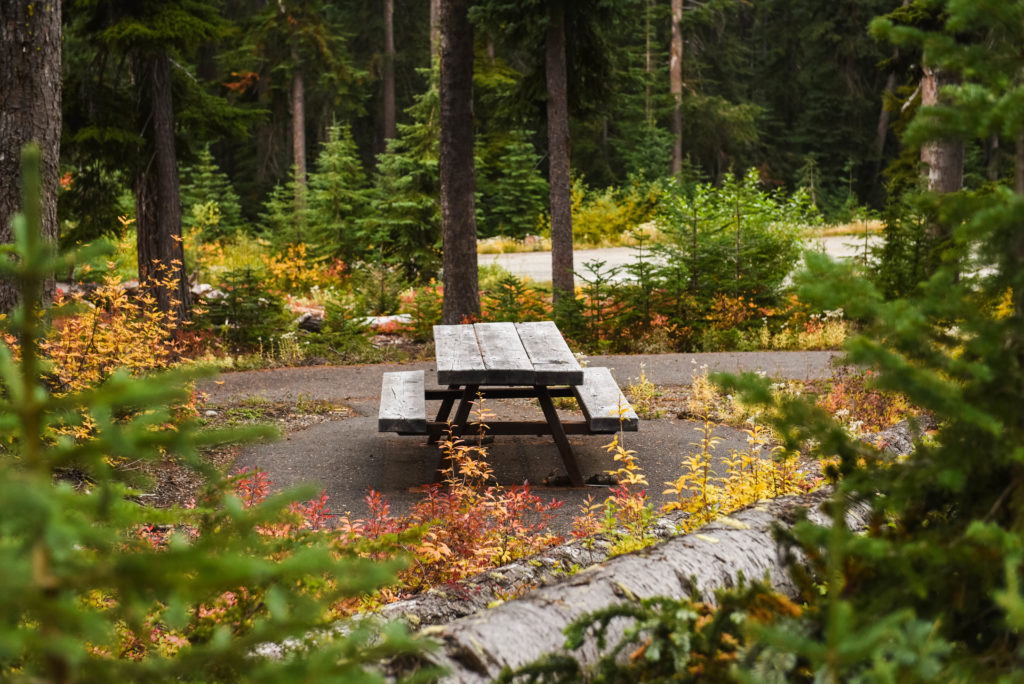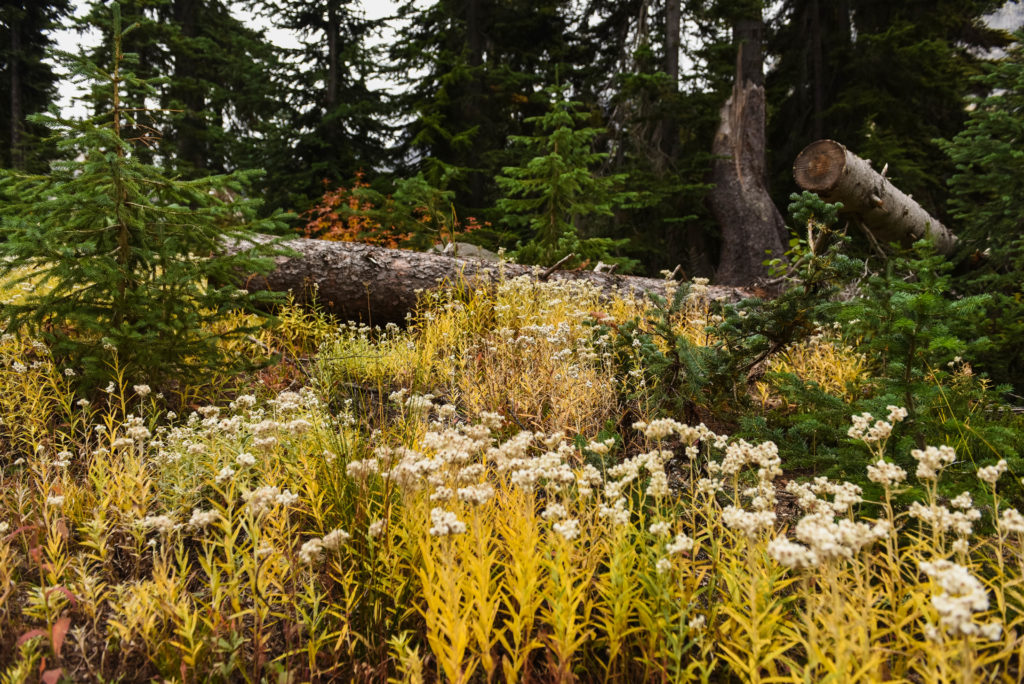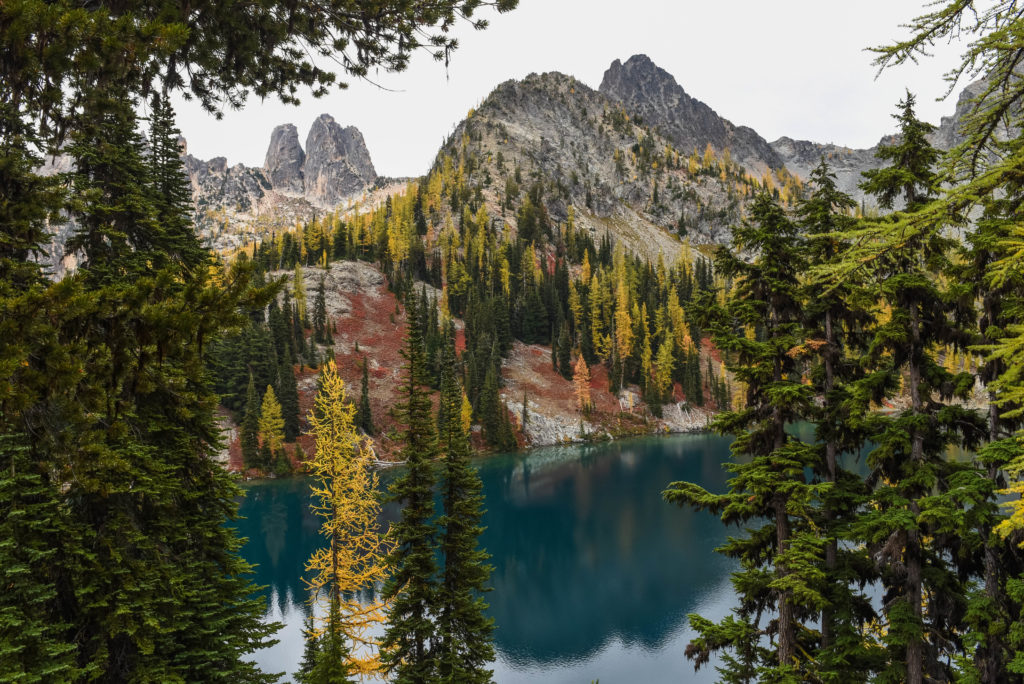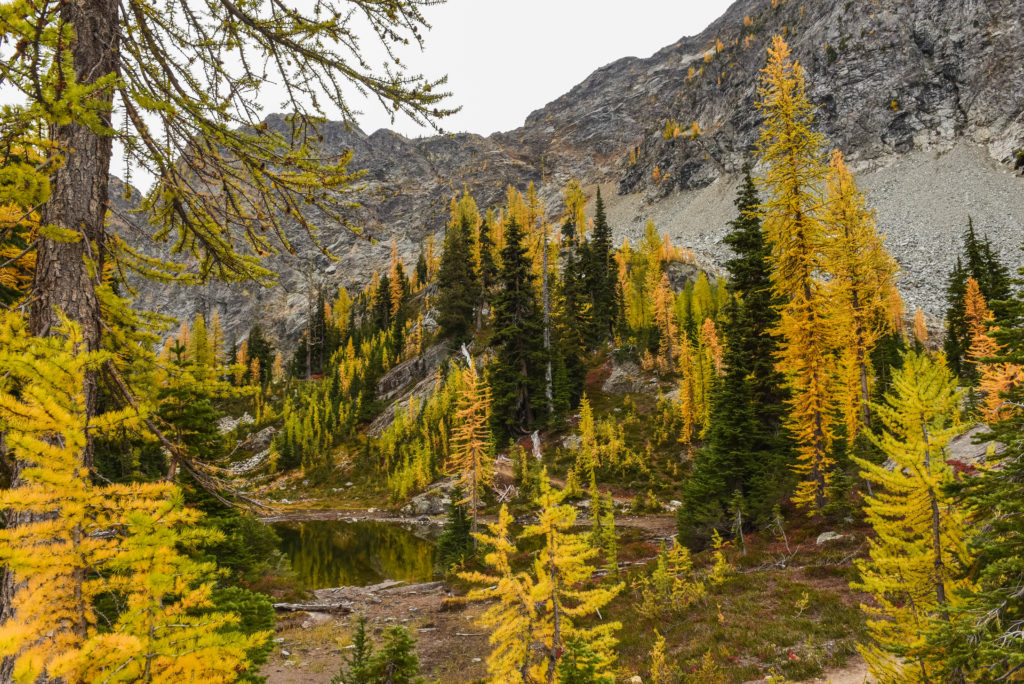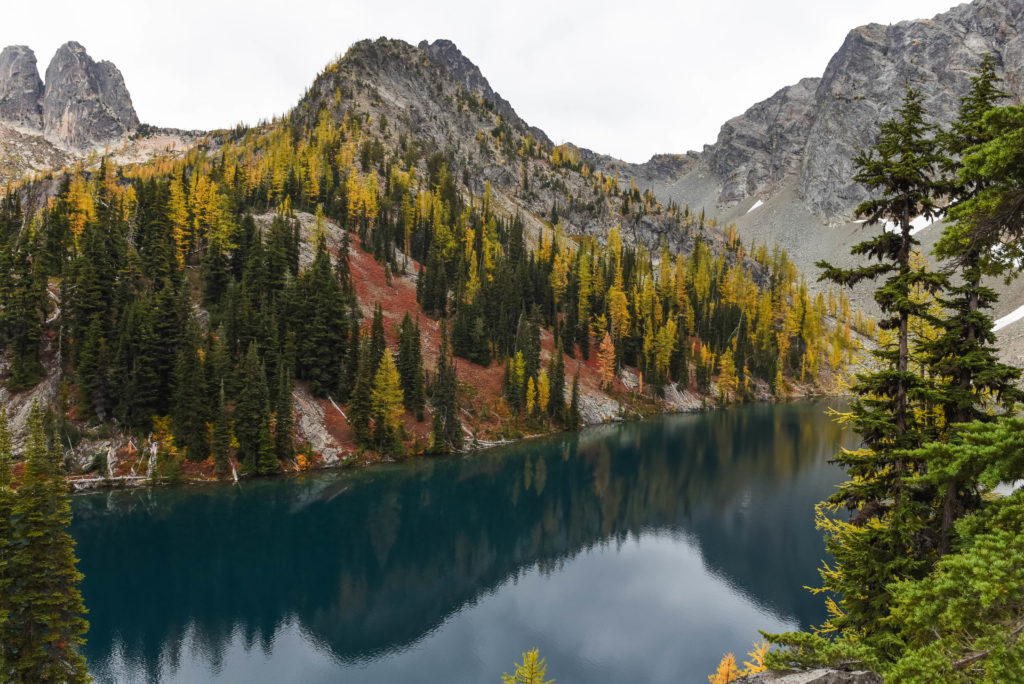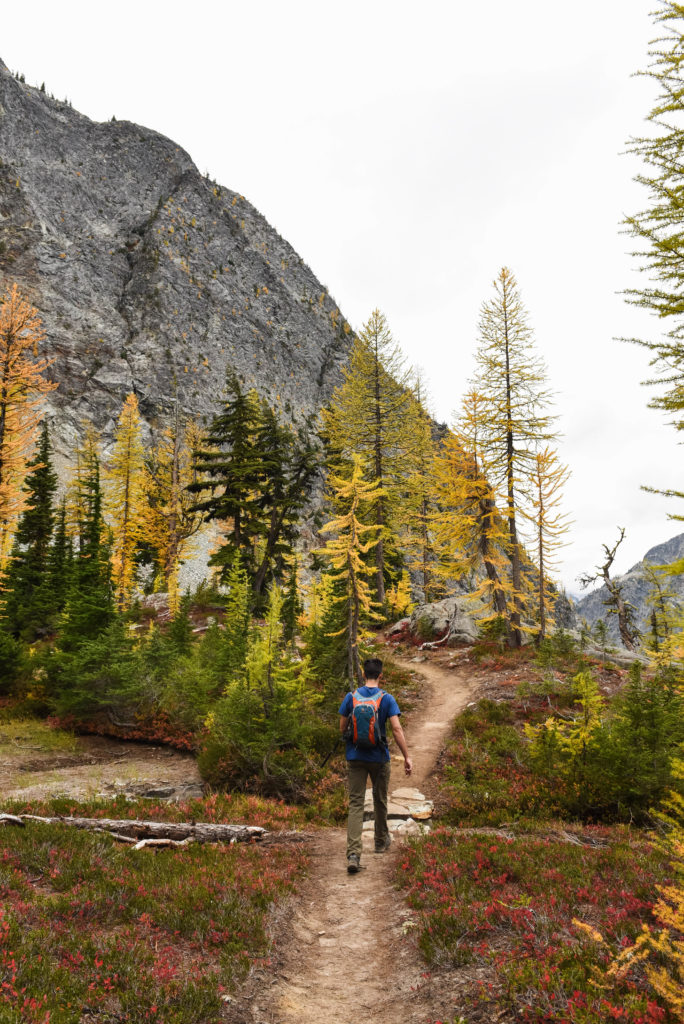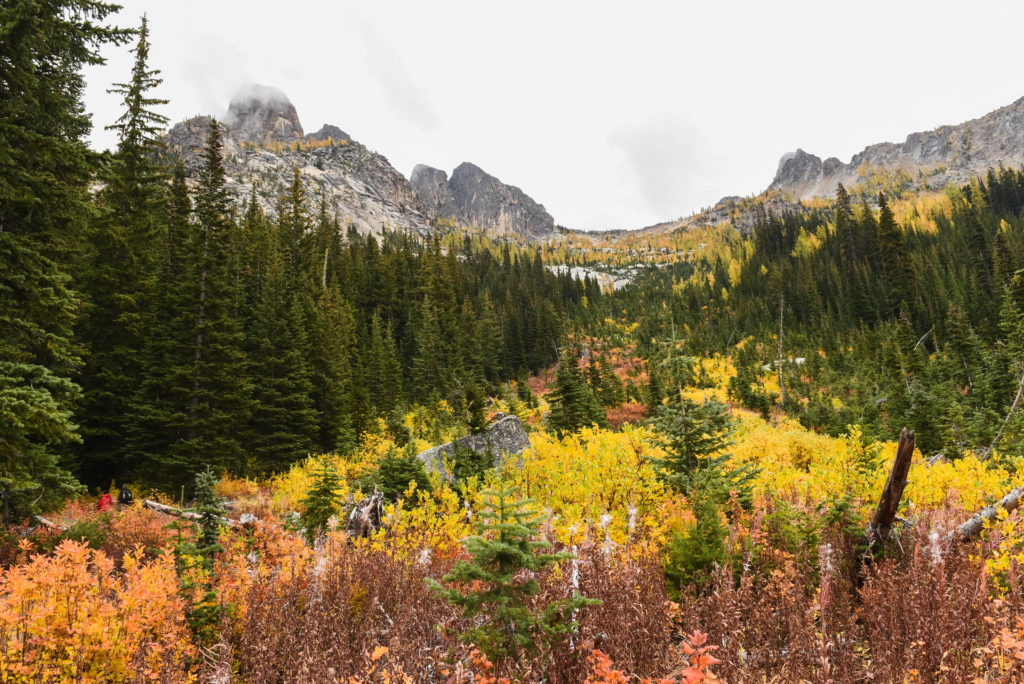We often detail day hikes – check out our full archive here.
If you live in Washington, it’s time to pencil in a weekend to see the larches! If you’re not familiar with larches, they’re the bright yellow pine trees in the photo above. Larches are deciduous conifers meaning they have needles instead of leaves and although they are conifers, larches are deciduous trees that lose their needles during autumn. Pretty neat!
I hadn’t seen a larch until I moved to Washington state. They are native to much of the cooler temperate northern hemisphere, on lowlands in the north and high on mountains further south. Larches are among the dominant plants in the boreal forests of Siberia and Canada. In the U.S., you can find larches in Oregon, Idaho, Montana, here in Washington. In Washington, you can typically count on larches being in bloom at the end of September and the beginning of October. The vibrant color varies each year and is different depending on the time and elevation, so your best bet is to get out there early and often. Larches can grow to be big boys – sometimes reaching 150 feet tall.
If you’re looking for a nice walk with bright autumn color, any old hike will do ya, but I highly recommend hiking to Blue Lake. Note there are at least six lakes named ‘Blue Lake’ in Washington (and another Blue Lake that Kate visited in Colorado!). I’m referring to the one just off of Highway 20 in the North Cascades. Blue Lake is an amazing Seattle weekend getaway destination. This beautiful 4.5 mile out and back hike features towering granite peaks, evergreen forests, meadows and slide areas with wildflowers and foliage, and of course the most beautiful blue mountain lake.
If you’re traveling from Seattle, it will take you about two hours and forty minutes to Blue Lake. Blue Lake is a sparkly gem surrounded by sheer granite peaks and it would not be a stretch to say it’s the most beautiful lake I’ve ever seen and way up there on my short list of best hikes. That’s no giveaway coming from someone who has been hiking and backpacking since the age of eight. Someone who has hiked across mountain ranges in Nepal and through jungles in Thailand, this hike was freaking amaze balls. If you’re within a three-hour radius, grab your boots, drive to Blue Lake, and start walking.
I’m going to go out on a limb here and say we also caught Blue Lake at the best possible time of year. Before setting out on this hike (back in 2018!), I had no idea the larches were in bloom. I actually had no idea what larches were, but now I plan weekend adventures around these beauties. You have to catch them when they change color before the needles fall. You’ll be ooing and aahing every step of the way. Just for reference, this hike to Blue Lake was during the last weekend in September, on the 29th to be exact.
I’m in hiking shape, but I would still consider this a very easy hike. The maximum elevation is 6254 feet and it’s only 2.2 miles in and then it’s back out 2.2 miles the way you came. There is only 1050 feet of elevation gain, which is nothing for the epic payoff. We saw small kids and pretty darn old people attempting the hike so if you’re second-guessing yourself, tighten your boots, grab a hiking stick, and give it a go. If you’re sick of the city, grab your camping gear and prepare for this epic Seattle getaway weekend destination.
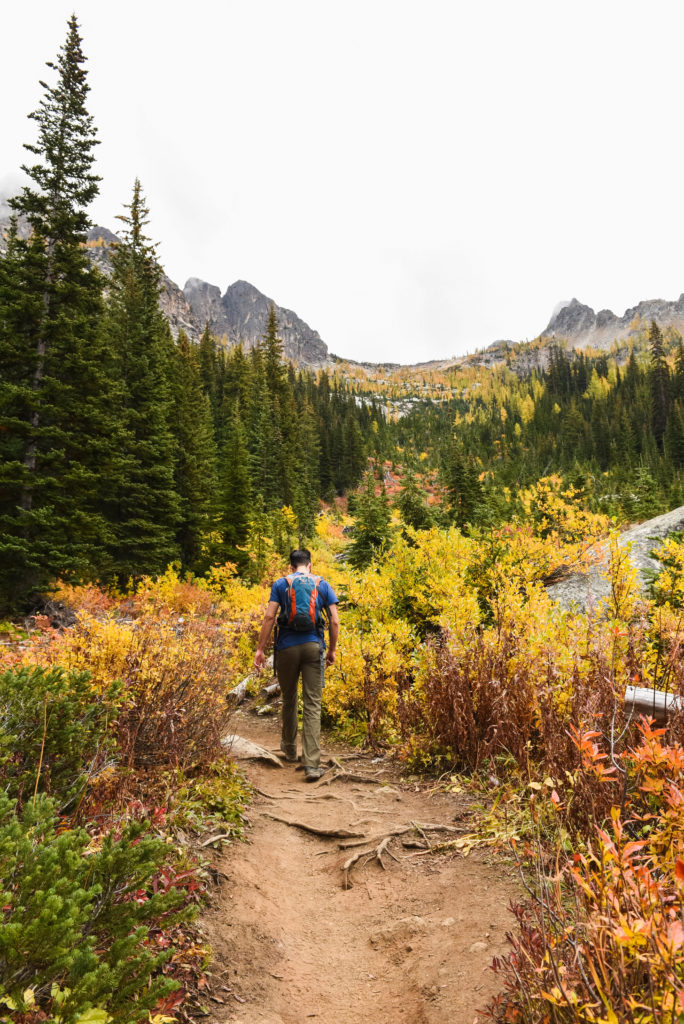
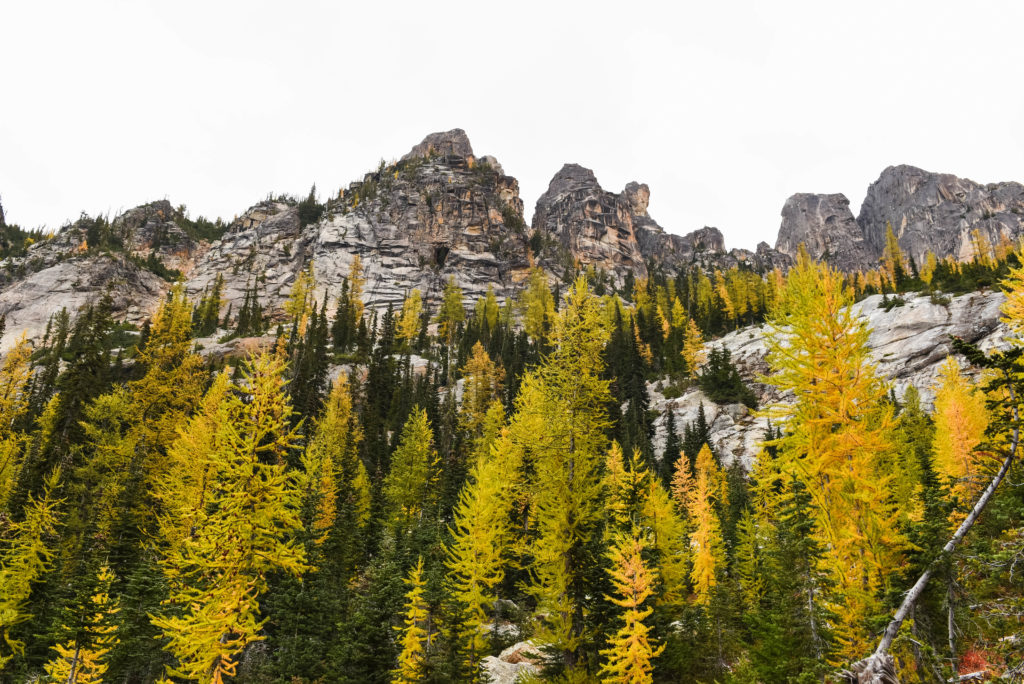 We’re quick (no brag!) and we made it to the lake in under an hour, but plan for two hours at most on the way up and then at least an hour wandering around the lake, looking at the nearby rock slides and vistas, maybe snacking a bit, before heading back down.
We’re quick (no brag!) and we made it to the lake in under an hour, but plan for two hours at most on the way up and then at least an hour wandering around the lake, looking at the nearby rock slides and vistas, maybe snacking a bit, before heading back down. 
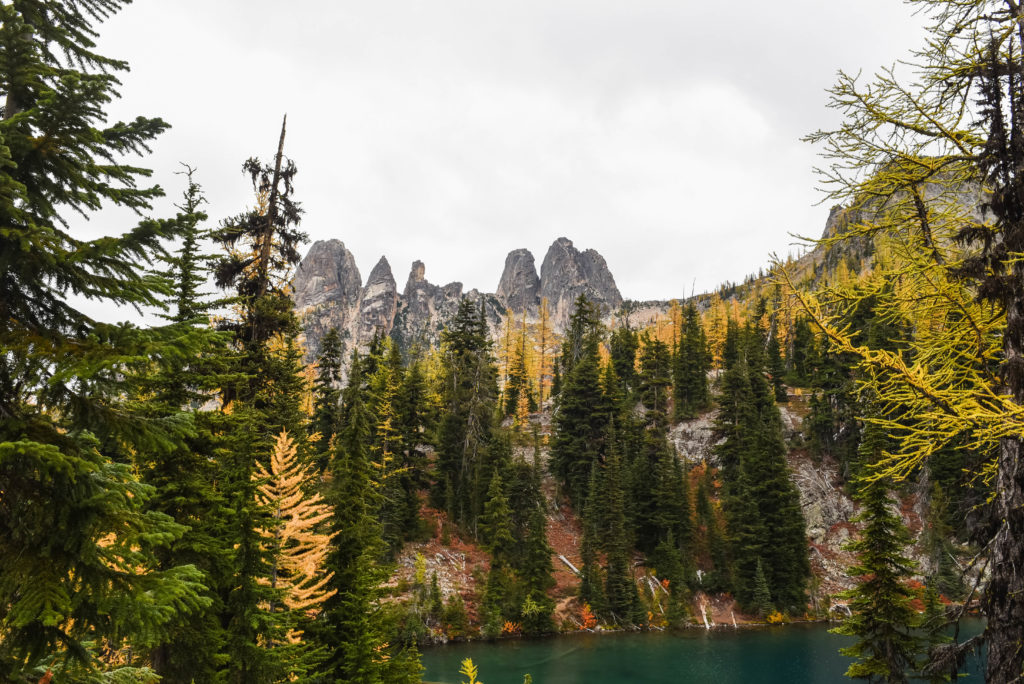
The trailhead is found right off of Highway 20. You’ll see signage and the lot will likely be full. Make sure you pay the parking fee if you don’t have a pass. As you ramble along, you’ll hear traffic from highway 20. Don’t worry this will fade after about a quarter mile or so. You’ll continue on through the forest, making your way up steadily until you emerge in a meadow. Depending on the season, it will be bursting with changing leaves or beautiful wildflowers. After a few beats you’re back in the forest. The rest of the hike passes quickly as you skirt the Liberty Mountain group to the left and gaze out at Cutthroat Peak and Whistler Mountain on the northwestern side of Highway 20 to your right.
Once you hear a gentle trickling sound, you’ll know you’re getting close. The water is an outflow stream of Blue Lake. In no time you’ll see the brilliant blue water. Take a seat on a boulder near the shore or wander around the loop and check out the old cabin, vista views to the northwest, rockslides, and smaller snowmelt ponds before settling down for a snack. No matter which you do first, I highly recommend wandering around the loop at some point as it’s really only a ten minute walk and offers a variety of views at a slightly better vantage point of the lake. From this higher angle, the sun’s glare will be cut and you’ll really see how sparkling blue the water is.
What to Pack:
- 2 liters of water
- snacks to enjoy at the lake
- extra layers for relaxing at the top (it will be a little chilly if you go in the fall)
- quick dry towel in case you want to jump in
- sunglasses
- camera – here’s mine + here’s Kate’s
- the ten essentials
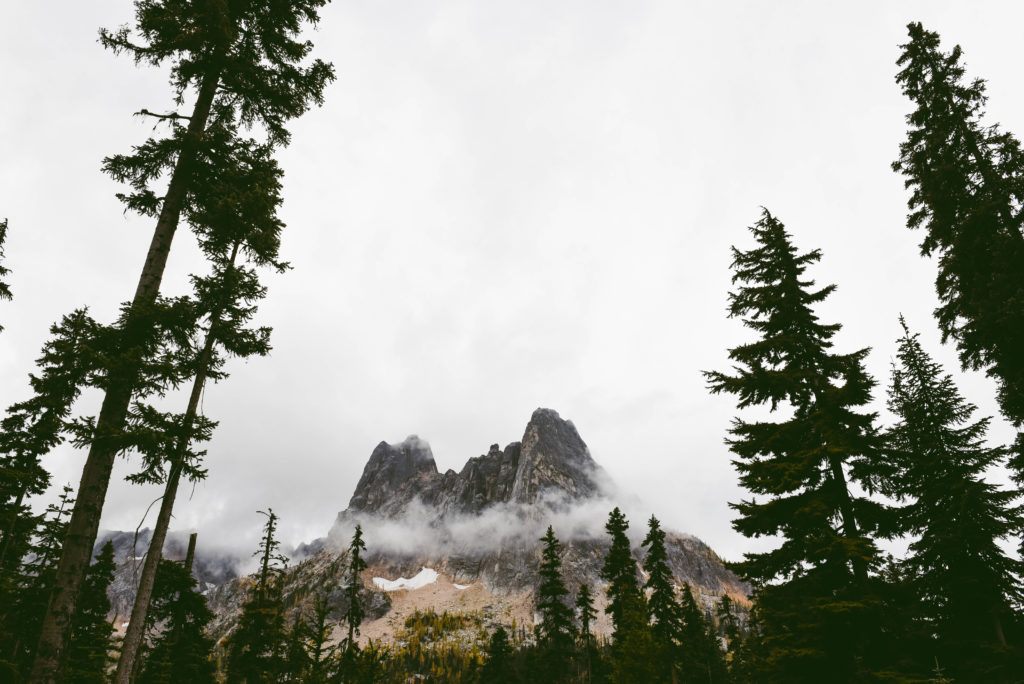
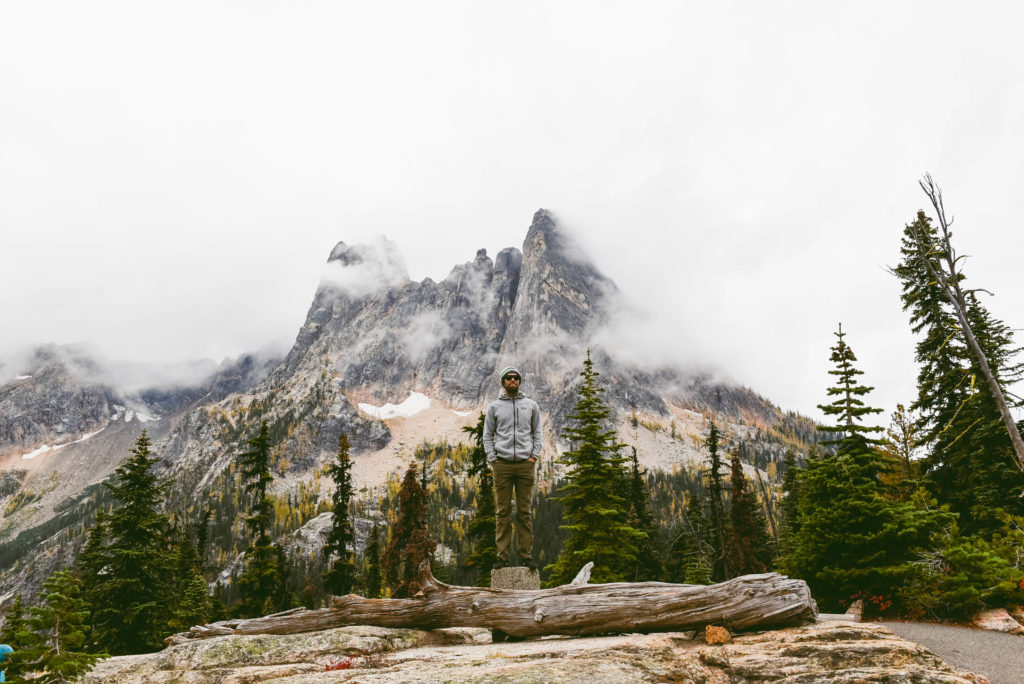
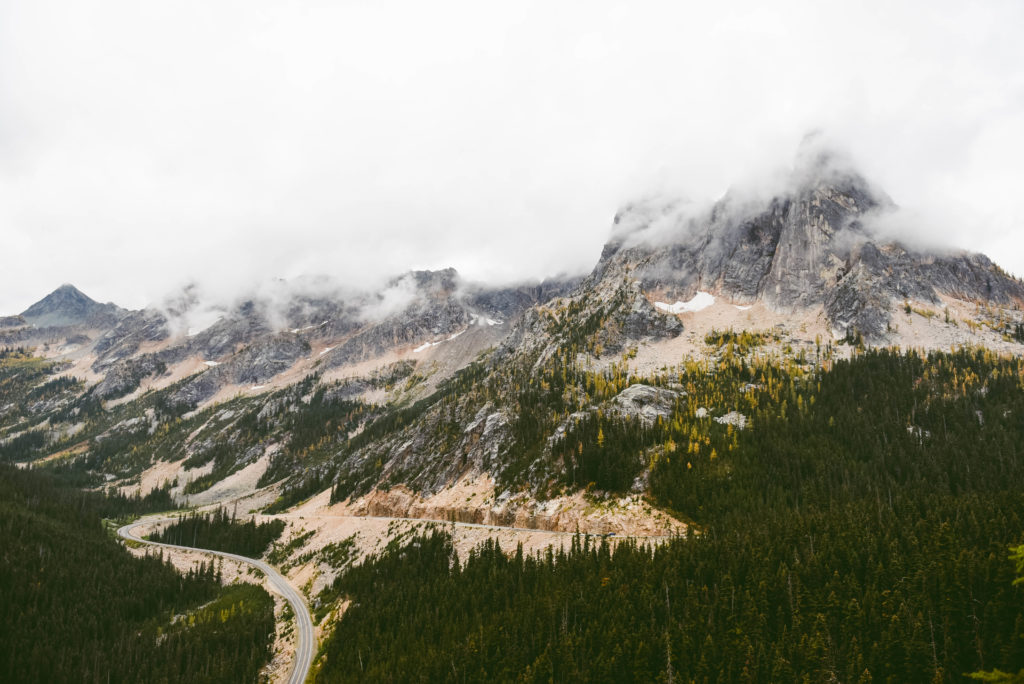 After the hike, head right out of the parking lot. Just 0.8 miles east from the trailhead on Highway 20 is the Washington Pass Lookout. This is an essential stop as it won’t add much time to your day, but will add some epic views. From this vantage point you’ll be able to see the Liberty Mountain group from the side opposite that of Blue Lake. Walk the short paved trail any enjoy nice vantage points of Liberty Bell, Highway 20 below, and beautiful rock walls of nearby mountains. This is also a nice spot to stop for lunch, instant coffee frappes anyone? Just look at that picnic table! Plus there are multiple pit toilets here, which means they’re in better shape than the one at the Blue Lake parking area.
After the hike, head right out of the parking lot. Just 0.8 miles east from the trailhead on Highway 20 is the Washington Pass Lookout. This is an essential stop as it won’t add much time to your day, but will add some epic views. From this vantage point you’ll be able to see the Liberty Mountain group from the side opposite that of Blue Lake. Walk the short paved trail any enjoy nice vantage points of Liberty Bell, Highway 20 below, and beautiful rock walls of nearby mountains. This is also a nice spot to stop for lunch, instant coffee frappes anyone? Just look at that picnic table! Plus there are multiple pit toilets here, which means they’re in better shape than the one at the Blue Lake parking area.